The Panzergrenadier Division Großdeutschland was an élite German Army (Heer) combat unit which fought on the Russian front during WWII. Originally a ceremonial unit, it first became an infanterie regiment and over the course of the war expanded to become an “over sized” panzergrenadier division with its own organic panzer regiment which included Tigers and Panthers.
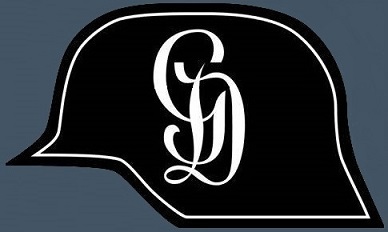
Motto: “Gott, Ehre, Vaterland” (“God, Honor, Fatherland”)
Nickname: “Die Feuerwehr” (“The Fire Brigade”)
The first elite unit of the Wehrmacht originated in the Berlin guard department. In 1936, Generaloberst Fritsch, Commander-in-Chief of the German Army, mandated that all army units had to rotate its best soldiers to the Guard Detachment which was deployed on ceremonial occasions in Berlin. The unit quickly gained a reputation for its elegance and impeccable demeanor. In June 1937, the unit was enlarged to regimental strength and was referred to as the “Wachregiment Berlin” (Guard Regiment).
The name “Großdeutschland” (“Greater Germany”) was given to the regiment by the city commander of Berlin, Generalleutnant Seifert and the regiment commander Oberst (Colonel) von Stockhausen. In April 1939, the unit was renamed Infanterie-Regiment (Motorized) “Großdeutschland”. Its short designation was “GD”. The name reflected that its members were not recruited from any specific region or military district but from the best men throughout the Reich. The regiment became an excellently trained, powerful infanterie unit which recruited from the infanterie teaching regiments. When the war broke out in September 1939, the regiment not did participated in the Polish campaign. However, some of its soldiers was in the Führer-Begleit-Bataillon which was Hitler’s personal escort in Poland but did not participated in any combat operations.
In September 1939, it was decided that Regimental staff vehicles would be marked with the white steel helmet symbol as a means of unit identification. The symbol was quickly adopted by the entire regiment, and was firmly established as the unit insignia in 1942.

Due to its élite status, on 4 April 1940 the Großdeutschland Regiment was assigned its own Sturmgeschütz (StuG) support kompanie with the creation of 16.Sturmartillerie/Infanterie-Regiment GD consisting of three zugs (platoons) with two StuG IIIs in each zug. They were transferred from Sturmartillerie Batterie 640. The assault guns, with its low velocity 75mm howitzers, functioned in the role in which they have been designed, as close support weapons for the infanterie but there was a tendency to also employ them against enemy armor. In March 1941, 16.Sturmartillerie/Infanterie-Regiment GD was increased to seven StuG IIIs.
This is a StuG III Ausf. A or an early Ausf. B in 1940.
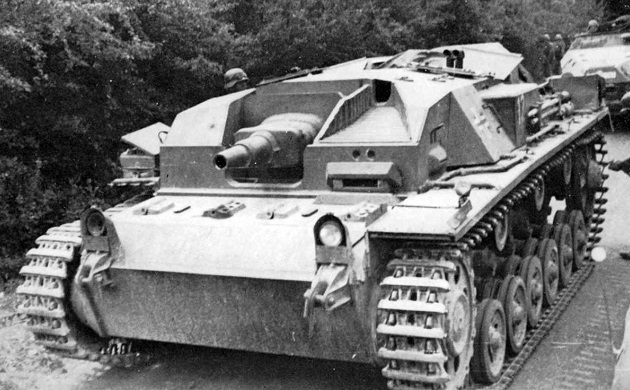
Baptism of Fire
The new regiment saw its first combat during the western campaign in May 1940 when it invaded France through Belgium and fought against the French and British troops. The first combat action was at Sedan which was the key target in the first phase of the German attack in the west. Großdeutschland was used to support various panzer divisions, but always within the framework of General Heinz Guderian’s XIX. Panzer Korps. During the second phase of the Battle of France with the breakthrough through the Weygand Line, Großdeutschland was subordinated to von Kleist’s Panzer Gruppe and was assigned to different units as needed. After the armistice with France, Großdeutschland remained as an occupying force in Alsace and Burgundy and was reorganized and expanded to the strength of a regimental combat group. In April 1941, Großdeutschland participated in the Balkan campaign and invaded Yugoslavia. It was involved in the conquest of Belgrade, where it occupied the radio building and reopened it as a German soldiers’ radio station. By June 1941, Großdeutschland was deployed near Warsaw as a reserve for Operation Barbarossa, the invasion of Russia.
Russia 1941
After the invasion of Russia began, elements of Großdeutschland supported the 7th Panzer Division, crossed the Bug River, participated in the encirclement of Minsk and then advanced to the Dnieper River. Its advance continued northeast in the general direction of Moscow. When Großdeutschland reached Jelna, the regiment was abruptly diverted to the south where it became involved in heavy fighting with troops of the Red Army at Konotop, Putiwi and Romny, east of Kiev. After the Battle of Kyiv, the regiment was diverted north again where it was eventually given a rest in the Orel area (north of Kursk). Near the end of 1941, the regiment was in a defensive position south of the Oka River where it confronted the Soviet winter offensive of Moscow. The first year of the Russian campaign, Großdeutschland took heavy losses but it did built a superb combat reputation.
1942
In early 1942, Großdeutschland continued to fight defensively against units of the Red Army and also carried out offensive purge operations against heavily armed partisans. The combat performance of Großdeutschland had been impressive enough to undertake further expansion of the unit. In April 1942, regiment was reorganized as a full division and on 17 April 1942 was redesignated as Infanterie-Division (Motorized) “Großdeutschland”. It also received its own organic panzer component, a battalion-sized unit named Panzertruppe GD.
Panzertruppe GD was a conventionally organized battalion with a HQ zug, three kompanies of panzers, and a maintenance zug of 3-ton trucks. The HQ zug consisted of two Pz.Kpfw. IVs with Sd.Kfz. 250/3 or 250/5 command half-tracks, light cars and motorcycle dispatch riders. The 1. Kompanie was a Pz.Kpfw. IV kompanie with a Stabs (HQ) zug consisting of two Pz.Kpfw. IVs and three zugs of six Pz.Kpfw. IVs in each. Both the Pz.Kpfw. IV Ausf. F1 and F2 were employed during the offensives of 1942. The 2. and 3. Kompanies were similarly organized but with Pz.Kpfw. IIIs (armed with 5cm KwK 39 L/40 long-barreled guns) and also included a number of Pz.Kpfw. IIs, which was largely relegated to reconnaissance duties.
In April 1942, 16.Sturmartillerie/Infanterie-Regiment GD was expanded up to Sturmgeschützabteilung (battalion) strength. In July, ‘Sturmgeschütz Abteilungen’ increased to 28 StuGs per battalion. Each battalion had three batteries with the number of assault guns in each zug increased to three and equipped with the new Sturmgeschütz Ausf. F armed with a 7.5 cm StwK 40 long-barreled gun. The commanders were officially mounted in Demag Sd.Kkz. 250/3 command half-tracks but in practice, the commanders preferred to lead their commands from the assault guns themselves. Each batterie had a Sd.Kfz. 252 or 250/6 ammunition carrying half-track as well.
Voronezh
Phase one of Fall Blau (“Case Blue”) was based on taking the city of Voronezh (west of Stalingrad) which sat astride both the Don and the Vornezh rivers. The city, which served as a junction for all north-south rail, road and river transportation in Central Russia, from Moscow to the Black and Caspians Seas, was to function as a pivot for the southward advance in phase two of Fall Blau and as a support base for the flanking cover provided by Heeregrouppe B. The northern flank of the advance was spearheaded by the 4. Panzer-Armee, the core of which was formed by the XXXXVIII Panzer-Korps consisting of the 24. Panzer-Division in the center, with the 16. Infanterie-Division (Motorized) on the right and Großdeutschland on the left. On June 28, the code word “Siegfried” was sent to all units and the Korps jumped off. The Soviets were dangerously thin on the ground were succumbed quickly and the Tim River, east of Kursk, was quickly reached and crossed. By June 30, the Germans had advanced half the distance to Voronezh. While the bulk of GD’s two infanterie regiments force marched in the extreme heat toward the next river, the Kslen. Kradschtz.Btl.(mot.) GD sped forward until rain and mud brought the advance to a temporary standstill on the 30th. When the advance resumed, the Soviets’ rearguard fought stubbornly to cover the orderly retreat of their main body. By 2000 hours on July 4, 7./I.R. GD 1 stormed the road bridge at Semiluki and established a bridgehead on the eastern bank of the Don River. Soviet attempts to destroy the bridge at the last moment were crushed. Infanterie of the I.R.(mot.) GD 1 raced into Voronezh, riding on top the divisional StuG IIIs to widen the bridgehead, reaching as far as the railroad yards before being repelled by a Soviet counter-attack. The Germans took Voronezh on July 6 only after bitter street fighting and never succeeded in cutting off the vital north-south railway line on the eastern bank of the Don River. Großdeutschland had been redeployed on the western bank of the Don River and sent racing southward into the great bend of the Don towards Manytsch.
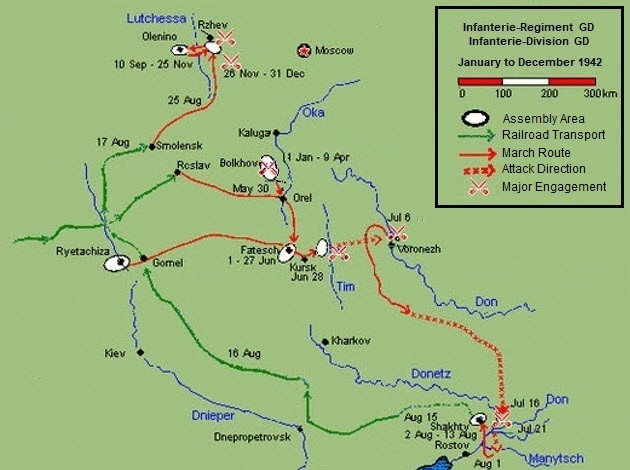
Film: GERMAN NEWSREEL BATTLE OF VORONEZH SUMMER 1942
The zugs of 1. Kompanie of Panzertruppe GD had an unique tactical marking system. A set of bars on the left indicated the zug number and a number on the right indicated the vehicle number in the zug (0 to 5) where 0 was most likely the zug leader’s panzer. Many of these odd marking systems were used only for a short time or until the unit was expanded or reorganized. The Pz.Kpfw. IIIs in 2. and 3. Kompanies carried just two digits which indicated the zug and vehicle numbers.
Pz.Kpfw. IVs of Panzertruppe GD had halted and German troops are marching pass. The two bars indicate the 2. Zug and the 0 would indicate the zug leader’s panzer.
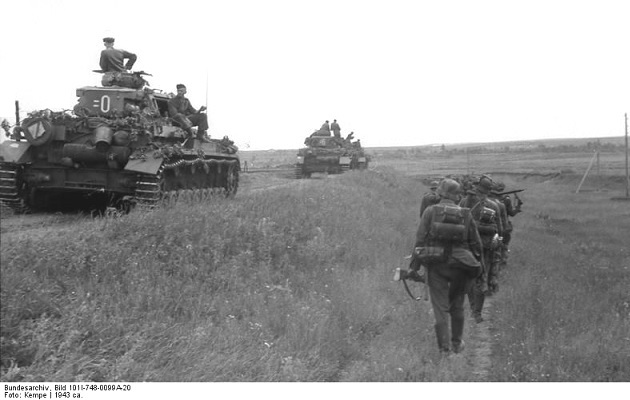
This is my close up of the photo above. The panzers in the background are too far away to make out their turret numbers. Note the Großdeutschland white helmet symbol on the panzer’s left rear fender.
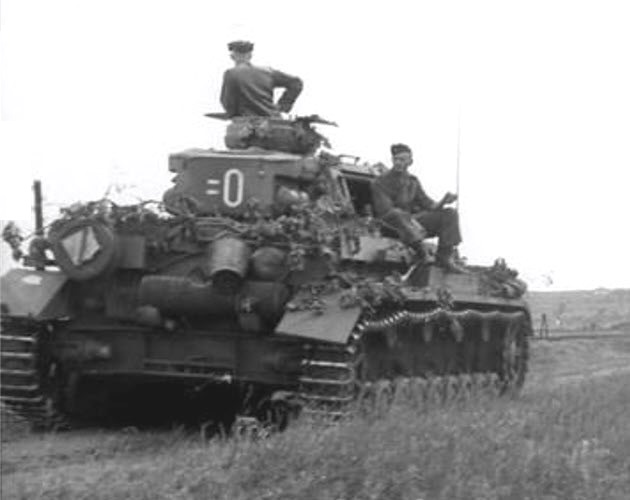
This is a Pz.Kpfw. IV Ausf. F2 (armed with the 7.5 cm KwK 40 long-barreled gun) of 1./Panzertruppe GD advancing towards Voronezh. This is panzer number 1 of 2. Zug (two bars). It has an aerial recognition panel draped over the storage bin on the rear of the turret.

In this photo, panzer number 5 is following panzer number 1 of 2. Zug.
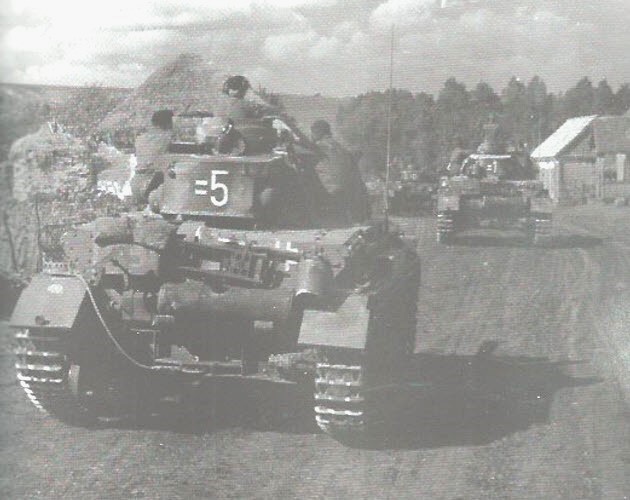
Panzer crewmen and Kradschützen (“Wheel Guards”) assemble to observe a GD Pz.Kpfw. IV Ausf. F1 demolish a farm building which a short time before was a Soviet strong point. The German training manuals warned against employing panzers as bulldozers and the zug leader of 3. Zug should have known it. At least, he did rotated the turret to the 7 o’clock position to prevent damage to the main gun and the sights. It does appear that the panzer did begin to push the building off its foundation.
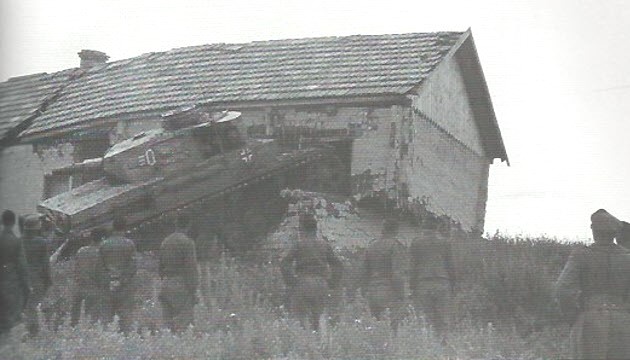
A PzKpfw IV from GD, 5th panzer of the 3rd Zug, passes a Sd.Kfz. 261 (with cross on rear plate) and a Kfz. 17 Horch 901 radio car of the division’s Kradschützen battalion.
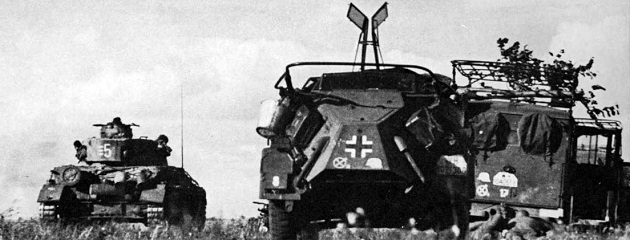
This is my close up of the panzer in the above photo.

Pz.Kpfw. IVs of Panzertruppe GD advances on a corduroy road across a bridge along the Don River. Note the unreadable name painted on the driver’s visor on the leading panzer.
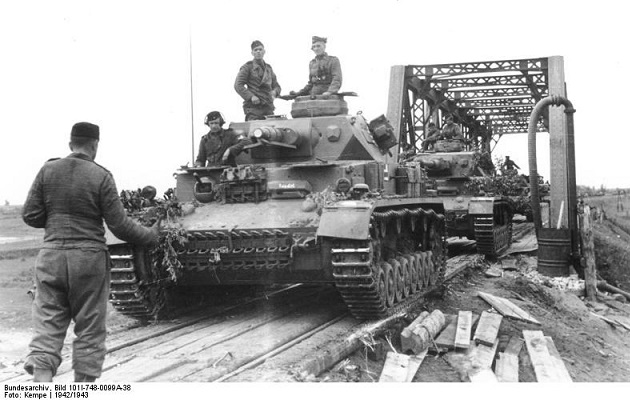
Watched by officers of Panzertruppe GD, a StuG III Ausf. F of StuG.Abt. GD moves along probably the same corduroy road. This StuG has a layer concrete over the driver’s roof and the right front extension to improve the ballistic shape and afford better protection.
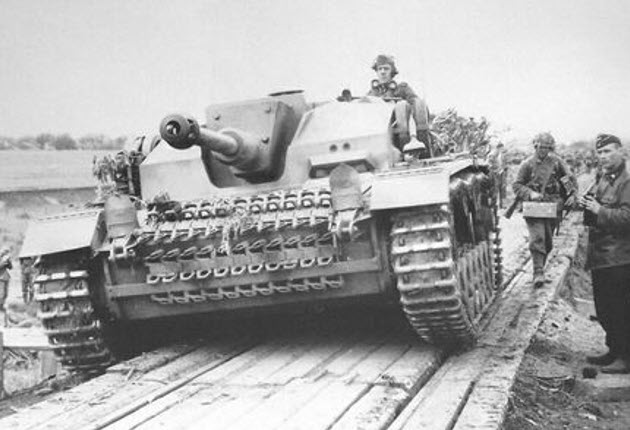
A Gefreiter from the Kradschützen battalion wearing a denim fatigue jacket pauses to share a joke standing next to a GD StuG III. This vehicle was used by Wachmeister Herbert “Mambo” Schmidt and the vehicle number “16” indicates the 6th StuG III in the 1st batterie. Spent shell cases, unused or faulty ammunition, as well as empty packing cases were carried back and collected by the division’s logistics personnel to be returned to Germany and recycled for the raw material starved German armaments industry.
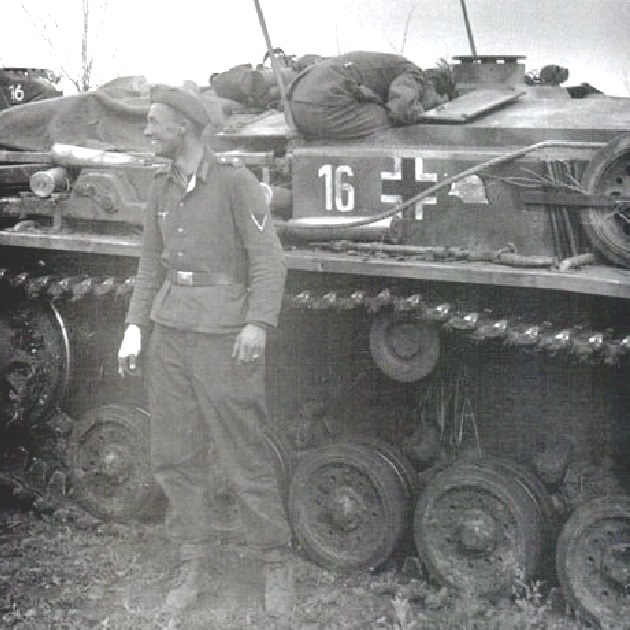
“Assault on Voronezh” – Artist: David Pentland
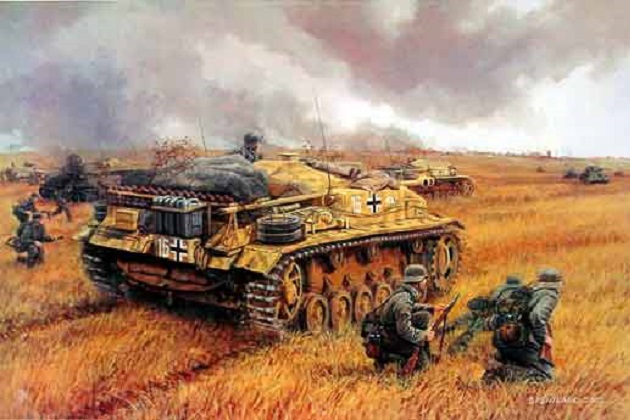
On July 8, the march to the lower Don River began and Großdeutschland was given top priority for the use of the roads south. All other units had to make way for GD with its long train of over 2500 motor vehicles of all types. Distances logged each day were considerable and the columns often outran their fuel supplies which was beyond the abilities of GD’s logistical services and the Luftwaffe had to intervene by flying in JU-52s loaded with fuel drums. This only covered a fraction of the division’s needs, a motorized division required thousands of gallons of fuel per day. The German armor spear head moved forward rapidly and saw little signs of the retreating Soviets. Soviet stragglers and sometimes entire units retreating in good order constantly ran into and fought violently with the supply units which were generally armed with nothing heavier than light machine guns. By mid-July, the fuel situation had become so critical that the division commander had to order that fuel to be siphoned from all non-fighting vehicles in order to keep the armor spearhead moving. The thin coverage of the line of advance invited counter-attacks by the gradually stiffening Soviet forces but only the speed of the attack helped keep the enemy off balanced until the division crossed the Lower Don River on July 22.
Rzhev
On August 1, Großdeutschland was pulled out of the line on the Manytsch River to go into OKH (Oberkommando des Heeres, high command of the Army) reserve. The division assembled at Shakhty on the north bank of the Donets River (northeast of Rostov) between August 1-14. On August 15, the division was transported by rail to Smolensk in Army Group Center. After only a week at Smolensk, the division was on the move again north and reached the Rzhev salient (west of Moscow) on August 30, going into bivouac as reserve until September 9. It was here that Großdeutschland saw some of the fiercest fighting of the entire war. In atrocious conditions, where the autumn rains reduced the terrain to a muddy wasteland more akin to the battlefields of WWI France, the division suffered heavy casualties between 10 September to 31 December 1942.
Pz.Kpfw. IV Ausf. F1s (armed with the low-velocity 7.5 cm KwK 37 L/24 gun) of 1./Panzertruppe GD on the Rzhev salient in September 1942.
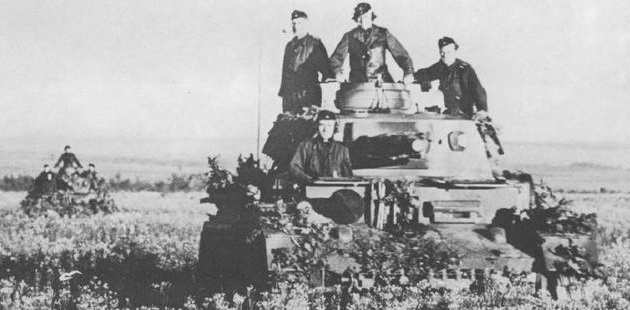
A close up of a Pz.Kpfw. IV Ausf. F1 on the Rzhev salient. Note that the gun barrel is capped to keep dust out during road marches and the wider 40cm tracks. The panzer commander appears to be wearing a British blanket-lined leather jerkin, large numbers of which were captured from British supply dumps in France and Belgium in 1940.
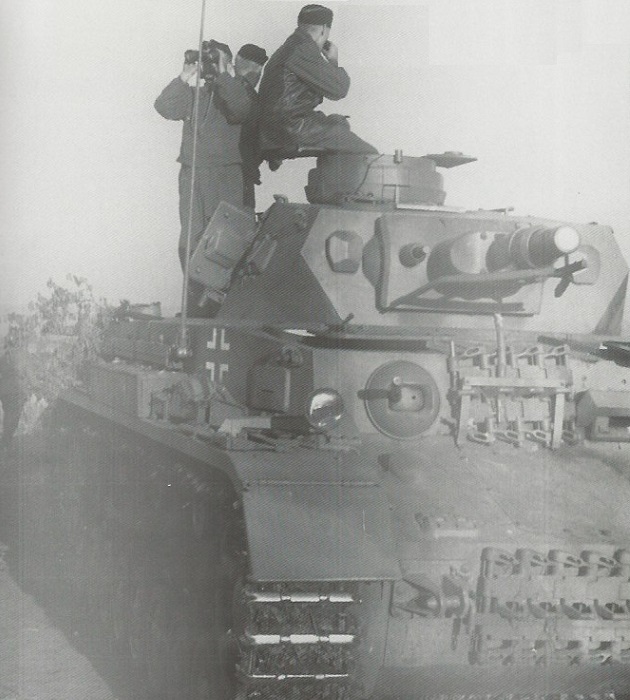
A Pz.Kpfw. IV Ausf. F2 of 1./Panzertruppe GD at Rzhev. This panzer appears to have been sprayed with patches of Dunkelgelb (dark yellow) paint over its Dunkelgrau (panzer grey) base coat. Many panzers intended for North Africa were redirected to the eastern front to replace losses so Dunkelgelb painted panzers were not uncommon. Note the local foliage attached to the panzer.
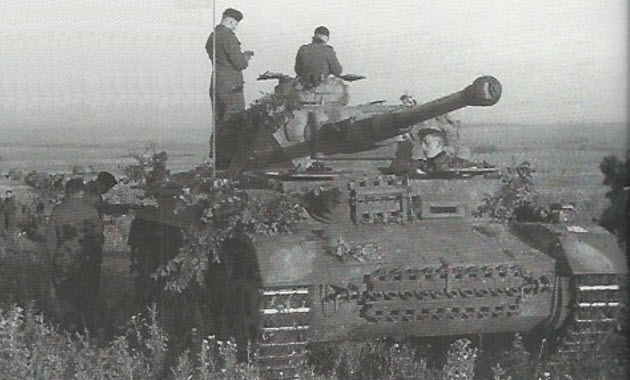
Pz.Kpfw. IVs move up to the front line while Soviet POWs march along the road towards the rear. Barely visible on the side of the turret are three bars for 3. Zug.
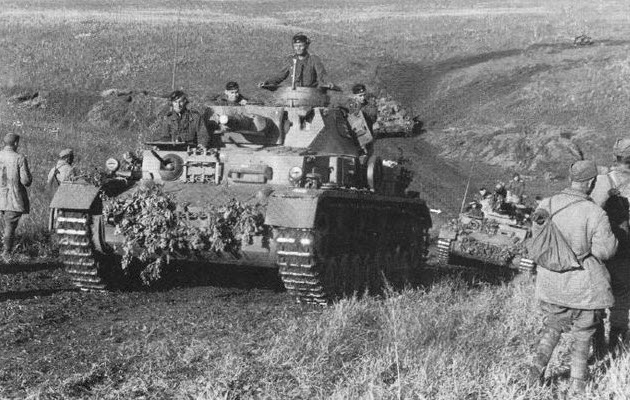
Crewmen of Pz.Kpfw. IV Ausf. F1, number 4 panzer of the 3rd Zug, lubricates one of the panzer’s eight bogie trucks.

In November 1942, the “Sturmgeschütz Abteilungen” was increased to 31 StuG’s per battalion with three additional assault guns for batterie commanders. This type of organization often referred to as the “Sturmgeschütz Brigade” and remained in use until the end of the war.
1943
After the bloodbath on the Rzhev salient where Großdeutschland was almost annihilated, Panzertruppe GD was re-organized as Panzer-Regiment GD. Großdeutschland received its first 56-ton Pz.Kfw. VI Tiger I tanks, which were incorporated as 13. Kompanie of Panzer-Regiment GD with only 9 Tigers. The kompanie marking was a large “S” (for “schwerer” or heavy) followed by two smaller digits representing the zug and vehicle number all painted in white outline.
Stabs-Zug: S01
- Zug: S10, S11, S12, S13
- Zug: S20, S21, S22, S23
The first 7 Tigers arrived without tactical markings and they were applied later. For the first few days, the new Tigers did not take part in any fighting because they were struggling with technical problems, and as there was a problem with spare parts, they could not be quickly restored to combat readiness. It was only on February 28 that four Tigers were operational, and another two were ready by March 6.
A Tiger I of 13.Pz.Kp./Panzer-Regiment GD, than part of Kampfgruppe “Strachwitz” (Commander: Oberst Hyazinth Graf Strachwitz), pass by a Steyr 1500A (Kfz.70, 1.5-ton, 4×4, Troop Carrier) on the road from Bogodukhow to Olshany on 9 March 1943.
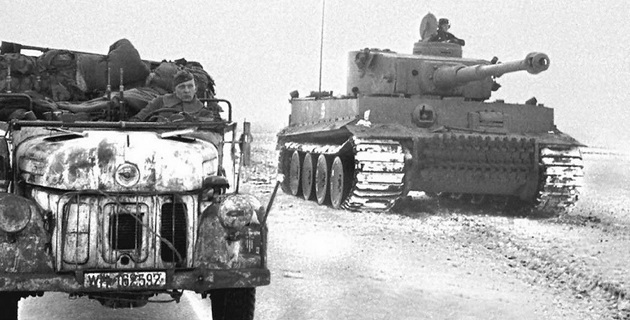
This is GD PanzerBefehelsWagen Tiger number S01 (Panzer and Kompanie commander: Hauptmann Wallroth) of 13.Pz.Kp./Panzer-Regiment GD. The Sternantenne D for the FuG 8 (Funkgerät or “radio device”) is clearly visible.

This is GD Tiger number S20 of 13.Pz.Kp./Panzer-Regiment GD.
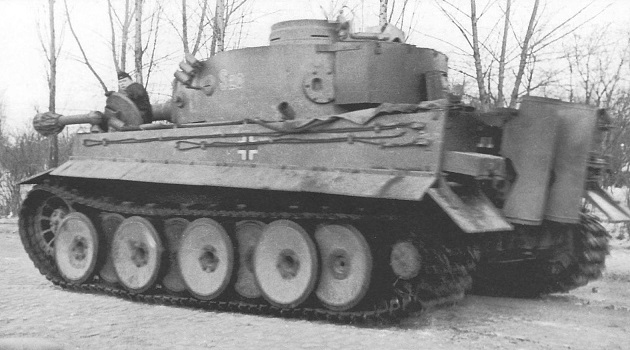
On 10 March 1943, Panzer-Regiment GD consisting of 6 Tigers, 39 Pz.Kpfw. IV Ausf. Gs, 9 Pz.Kpfw. III and 6 Pz.Kpfw. III Ausf. M (Fl)s prepared for an attack on the village of Bogodukhow in eastern Ukraine. 13.Pz.Kp./Panzer-Regiment GD moved to the area of hill No. 197, south of the town of Kryssino. The Tigers were to strike from the northwest, cross the Merla River (the previous day I./Grenadier-Regiment GD captured the bridge) and attack Bogodukhow from the north. At 1100 hours on March 11 after an artillery barrage, the Tigers of 13.Pz.Kp./Panzer-Regiment GD launched their attack on Bogodukhow according to plan. After two hours of fighting, the Soviets were pushed out of the town and the 13th kompanie set off in the pursuit of the enemy, reaching in the afternoon the towns of Zarabjanka, Leskowka, Stszerbaki and Ssennjanka, inflicting heavy losses on the Soviets.
Oberst Strachwitz confers with Leutnant Rietsch, the battalion signals officer of II./Panzer-Regiment GD. This is a Befehlspanzer (command tank) Pz.Kpfw. III Ausf. M with an operational 5cm KwK 39 L/40 long-barreled gun. Rietsch (on the right) is wearing a field-grey reversible to white camouflage winter suit. The panzer is not camouflaged in white due to a shortage of white paint.
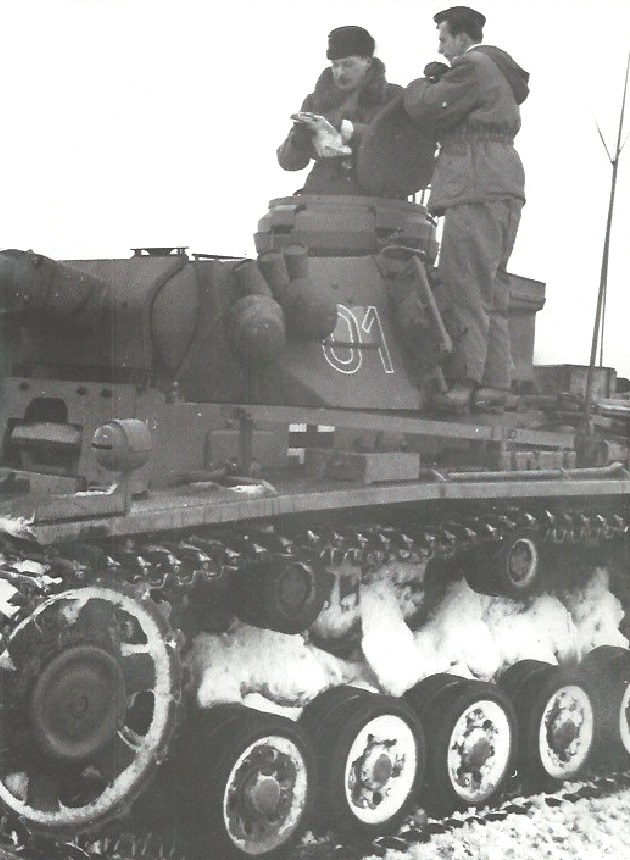
These GD grenadiers are riding on a rare panzer, a Flammpanzer III Ausf. M. The 50mm gun was replaced by a flame gun and a large tube was mounted. The crew was reduced to 3 (no gunner or loader) where the panzer commander fired the flame gun and co-axial MG using foot petals. Only 100 were built between January and April 1943. GD received 28 of them and they were assigned to the Stabs-Kompanies (HQ Companies). In the Spring of 1943, 13 of them were transferred to the 11. Panzer-Division. While flaming in the open country of southern Russia, the Flammpanzer became a prime target for Soviet gunners.
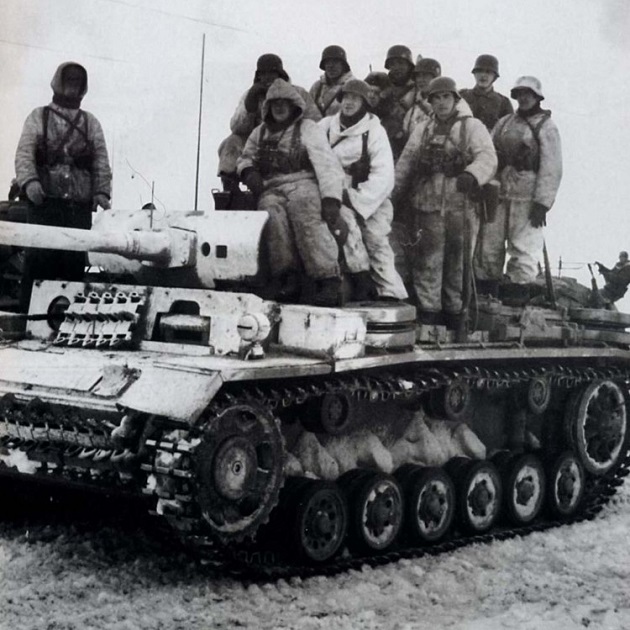
This is another view of the Flammpanzer III Ausf. M above. In the background on the left is Oberst Strachwitz’s Befehlspanzer number 01. Note that only the front of this Flammpanzer was painted in white camouflage.
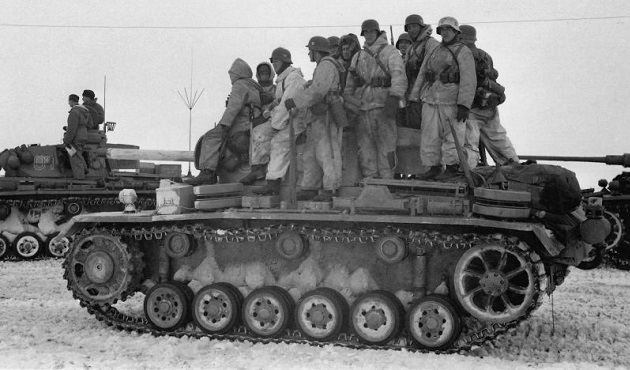
Two early Pz.Kpfw. IV Ausf. Gs of Panzer-Regiment GD, Kharkov, March 1943.
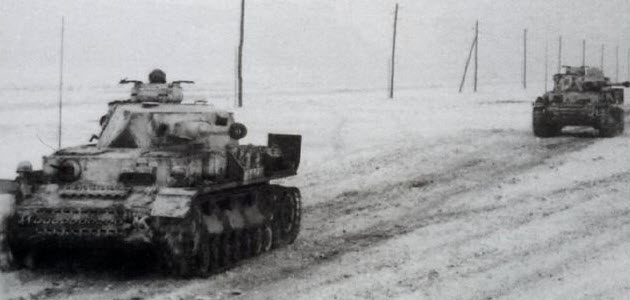
Panzer-regiment GD with the Tigers performed exceptionally well during both the defensive fighting around Kharkov and in General Manstein’s counter-offensive to recapture the city and drive towards Belgorod.
After the winter campaign, Großdeutschland went into a well deserved rest and refitting. On 23 June 1943, the division was officially reconstituted as a panzergrenadier-division and renamed Panzergrenadier-Division “Großdeutschland”. As such, it had little in common with other panzergrenadier-divisions or, for that matter, panzer-divisions. While a normal panzergrenadier-division had an organic panzerabteilung, it was most often composed partially or completely of assault guns. With its new establishment of a Stabs-Kompanie of 17 Pz.Kpfw. IVs and two Abteilungen, each with with a Stabs-Kompanie and and four panzer kompanies (three in the kompanie HQ; five per zug) and its own organic kompanie of Tigers (two in the Stabs Zug and three zugs with four Tigers each). Panzer-regiment GD was stronger than most of the panzer-divisions on the Eastern Front at that time.
Kursk
The German counter-attacks between February and March 1943 had succeeded in restoring much of the old German front line and caused heavy losses in Soviet troops and material. The spring thaw left the Soviets still holding a large salient projecting westward between the junction of German Army Group Center and South. The Germans decided to use their panzer reserves to eliminate the Soviet salient at Kursk. The operation known as Unternehmen “Zitadelle” was beset by delays, above all the Führer insisted to wait until the new Pz.Kpfw. V Panther was available in sufficient numbers. The long-delayed assault began for Großdeutschland on 4 July 1943.
Extraordinary security measures were taken in preparing for Unternehmen “Zitadelle”. This included special formation markings replacing the standard insignia used by German units. These markings were temporary and worn in the majority of cases only in the summer of 1943, the 2nd SS Panzer-Division “Das Reich” was still carrying the Kursk insignia in late 1943. One source suggests that only three German Army divisions displayed their Kursk insignias (6, 7 and 19 Panzer Divisions), in black. Most of the Großdeutschland units retained the white helmet during the battle. The GD Tigers at Kursk did not appear to carry any divisional markings.
Großdeutschland Kursk Unit Marking

For Unternehmen “Zitadelle”, Großdeutschland was assigned to General Otto von Knobbelsdorff’s XXXXVIII (48.) Panzer-Korps. Panzer-Abteilung 51 and 52 were the first units to be equipped with the new Pz.Kpfw. V Panthers. Panzer-Regiment 39 was hastily assembled consisting of Panzer-Abteilung 51 and Panzer-Abteilung 52. Panzer-Regiment 39 under the command of Panzer-Brigade 10 was attached to Panzergrenadier-Division Großdeutschland as a subordinate unit. Technically, the new Panthers were not an organic part of Großdeutschland.
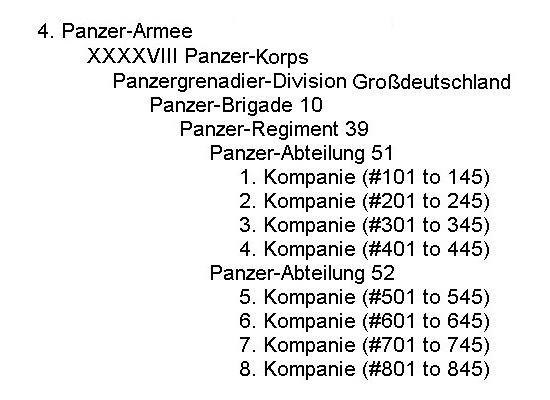
For more information see “Panthers at Kursk 1943“.
Tigers of 13.Pz.Kp./Panzer-Regiment GD stand ready next to Panthers of Panzer-Abteilung 51. Behind the Tigers appear to be Pz.Kpfw. III Ausf. Ns w/Schurzen armed with the 75mm KwK L/24 gun to provide the Tigers and Panthers protection against enemy infantry.
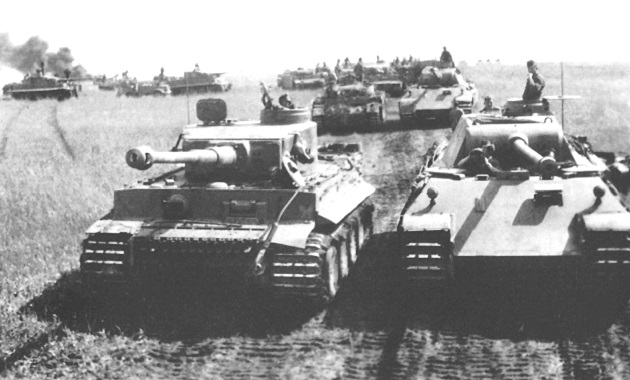
The 13.Pz.Kp./Panzer-Regiment GD commanded by Hauptmann Wallroth took an active part in the battle. On July 4, the kompanie had only 12 Tigers. When the attack began at 0400 hours, the Tigers had first to penetrate numerous Soviet mine fields. After crossing the Berezowka River, they continued the attack. Many of the Tigers were damaged, only 3 were still operational at the end of the day. The following day at 1040 hours, the kompanie consisting of 3 Tigers attacked Butowo and Hill 244.5. A Soviet anti-tank ditch and heavy artillery fire stood in their way. A new attack started at 1400 hours and Hill 241.1 was taken but one Tiger was lost. On July 7, the attack was carried out by the two Tigers only and at the end of day both Tigers were damaged by Soviet anti-tank mines.
Tiger number 11 of 13.Pz.Kp./Panzer-Regiment GD during Kursk.
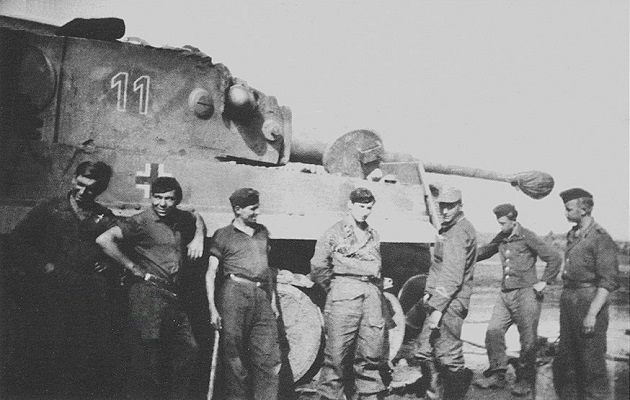
July 8:
Only the persistent effort of the division’s repair service made it possible to repair the Tigers. The kompanie possessed again 8 operational Tigers. The Tigers attacked Wierchopyenye which was defeated after a few hours and the Großdeutschland division took defensive positions. Ten Tigers took part in the attack which commenced on July 9 at 0800 hours. Heavy battles at Nowosiolka again caused damage to many of the Tigers and by the evening only 3 Tigers were still operational. On that day, the kompanie was credited with 18 Soviet tanks destroyed (hit?).
July 11:
Units of the Großdeutschland division had fought off numerous counter-attacks by Soviet forces and the kompanie had 11 operational Tigers. An attack began at 0700 hours with Panthers of the 39th Armored Regiment proceeding the Tigers. At 1000 hours, the objective of the attack, Hill 342.8 was taken. During a reconnaissance patrol by two Tigers, one of them was immobilized by a Soviet AT mine.
July 12:
Another attack began at 0500 hours in the direction of Hill 260.8 which was taken. In the afternoon, a Soviet counter-attack was repelled mainly by camouflaged Tigers and the struggle did not even end after dark.
July 13:
The kompanie operated in the region of a hill west of Wierchopyenye. The following day, the kompanie operated in the Czopajew region destroying Soviet positions on a hill to the west.
July 15 and 16:
The kompanie took part in repelling some attacks by Soviet tanks. At Nowienkoje, with only 5 operational Tigers, the kompanie hit 16 Soviet tanks.
July 17: Three repaired Tigers arrived at the kompanie.
July 18:
The Grossdeuschland division was transferred to Heeres Gruppe Armee “Mitte” (Middle or Center) and its position in the line was taken over by the 3rd SS Panzer-Division.
After Kursk
On July 19, Panzer-Abteilung 51 transferred its surviving Panthers to Panzer-Abteilung 52 and was withdrawn in order to be refitted with new Panthers. The men and equipment of Panzer-Abteilung 51 were loaded on trains in Bogodukhowo and transported to Briansk. Between July 21 and 31, Panzer-Abteilung 52 continued fighting as part of LII ArmeeKorps and later became part of the 19. Panzer-Division. The Abteilung received 12 new Panthers from Germany and incurred heavy losses in the ensuring combat. The last Panthers were destroyed during the fighting for Kharkov.
After arriving in Briansk, Panzer-Abteilung 51 received new panthers from I. Abteilung, Panzer-Regiment 26 (I./Pz.Rgt.26). Near the end of July, I. Abteilung, Panzer-Regiment Großdeutschland was transferred in an emergency, to counter a Soviet assault. Panzer-Abteilung 51 was merged into Panzer-Regiment Großdeutschland and remained with GD until December 1943.
The abteilung’s organization did not change and the camouflage continued to be used. Uniformly painted Dunkelgelb Panthers were painted with green stripes using Grün (RAL 6003) paint. The turret numbers were smaller and painted in black without white outline. All the GD Panthers carried a walking panther badge at this time.
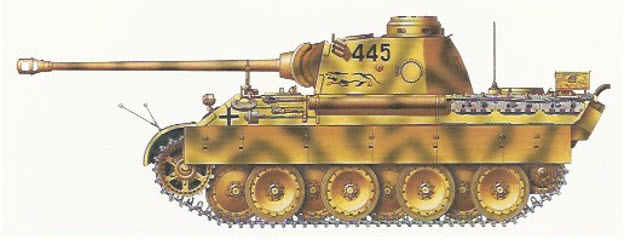
Großdeutschland Tiger Abteilung
The abteilung was formed on a test range in Senne, Germany. It included the 13th kompanie which was already fighting at Kursk and as of 1 July 1943 was renamed the 9th Kompanie, III. Abteilung of Panzer-Regiment GD. Two other heavy panzer kompanies were added: the 3rd Kompanie of schwere Panzerabteilung 501 and the 3rd Kompanie of schwere Panzerabteilung 504 which became respectively the 10th and 11th Kompanies of III. Abteilung.
In July, the abteilung was transported from Paderborn, Germany to Sunny, Ukraine by rail. On July 27, the 312th Panzer-Kompanie (Fkl), equipped with Borgward IV radio controlled heavy explosive carriers, joined the abteilung. On August 5-6, the abteilung was concentrated in Achtyrka, Ukraine and the abteilung went into combat for the first time on 15 August 1943 at Karachev.
III./Panzer-Regiment Großdeutschland
| Kompanies | Zugs | Tiger Tactical Numbers |
|---|---|---|
| Stabs-Kompanie | Stabs-Zug | S01, S02, S03 |
| 9. Kompanie | Stabs-Zug 1. Zug 2. Zug 3. Zug | A01, A02 A11, A12, A13, A14 A21, A22, A23, A24 A31, A32, A33, A34 |
| 10. Kompanie | Stabs-Zug 1. Zug 2. Zug 3. Zug | B01, B02 B11, B12, B13, B14 B21, B22, B23, B24 B31, B32, B33, B34 |
| 11. Kompanie | Stabs-Zug 1. Zug 2. Zug 3. Zug | C01, C02 C11, C12, C13, C14 C21, C22, C23, C24 C31, C32, C33, C34 |
GD Tiger number A02 of 9. Kompanie. Note the damaged Feifel air filter on the rear hull.
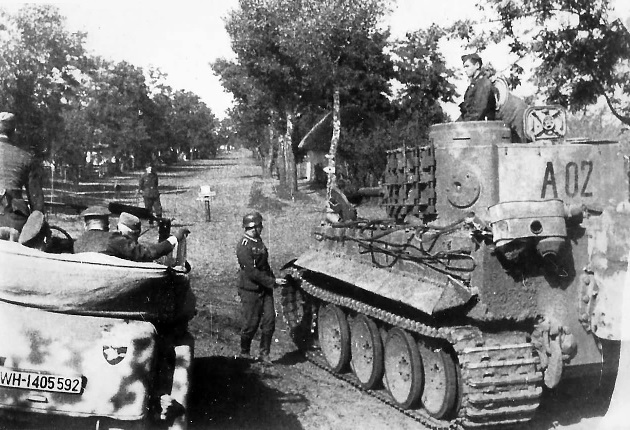
GD Tiger number B22 having maintenance being done.
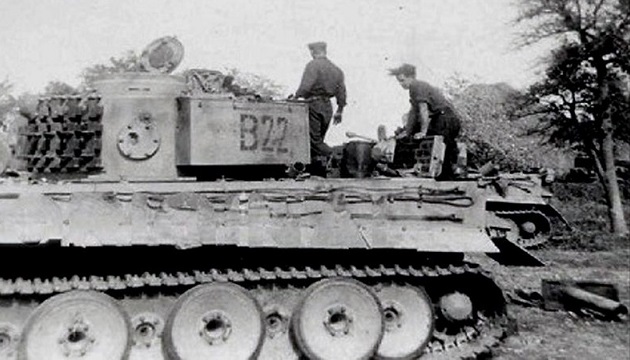
After Großdeutschland had marched to Karachev at the end of July, the division counterattacked until mid-August 1943 as part of the 2nd Panzer Army southwest of Orel. Großdeutschland then moved back to Armee Gruppe South, northeast of Kharkov. A defensive battle took place there in August and September. Then a retreat to the west followed, which took place behind the Dnieper River by mid-October.
GD Tiger number C01, the commander’s panzer of 11. Kompanie, September 1943.
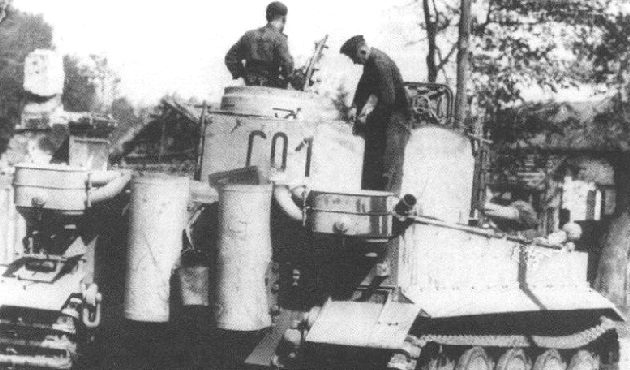
GD Tiger number C31 appears to be new and ready for action.
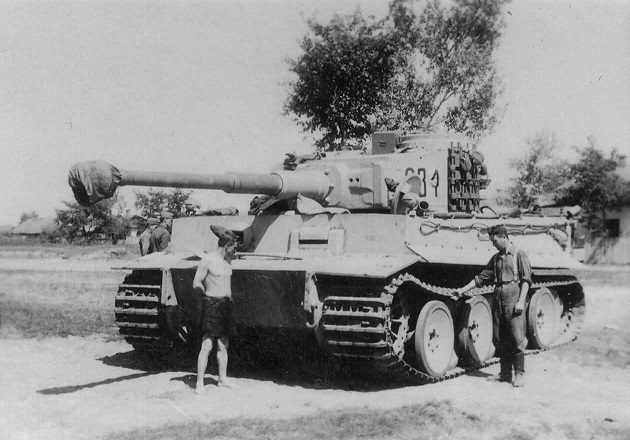
At the end of 1943, I./Panzer-Regiment GD transferred to the Reserve Armee to convert to the Pz.Kpfw. V Panther. Along the Dnieper River, the Großdeutschland division defended the Kremenchug bridgehead, which developed into the defensive battle until December 1943, then it defended Krivoi Rog and Kirovgrad.
1944
As a replacement for the Panther detachment of Panzer-Regiment GD fighting on the western front, the division received I./Panzer-Regiment 26, which was also equipped with Panthers, from Heer (Army) troops until the return of their Panther abteilung in November 1944.
Großdeutschland spent the first half of 1944 in fierce defensive fighting, with the formation being able to carry out attacks on rare occasions. In January and February 1944, parts of the division took part in the relief of the Cherkassy pocket and the Battle of Korsun. In mid-January 1944, the Soviet Offensive launched by the 1st and 2nd Ukranian Fronts had been halted behind the Dnieper River and the Eastern Front temporarily stabilized.
The crewmen of Tiger number A23 put the pause in the fighting to good use to rest, clean and repair their gear.
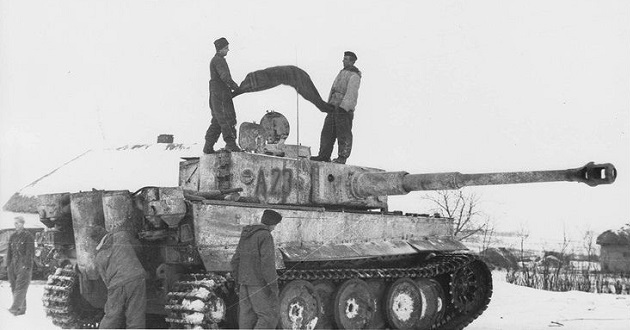
On 1 March 1944, Oberst Willi Langkeit became commander of the Panzer-Regiment Großdeutschland. He led the Panzer-Regiment during the fighting in Romania, Kurland and East Prussia until October 1944. After recovering from his severe wounds sustained on 15 October 1944 during the fighting near Schaulen, he became commander of the replacement brigade.
In March and April 1944 there were retreat fights across the Bug River back to the Prut River in Bessarabia. Then a retreat over the Ingul, Bug and Prut rivers to behind the Moldau River in the foothills of the Carpathians north of Jassy in Romania. GD once again excelled in the ebb and flow of battles around the town of Târgu Frumos from April 10 to May 5, with the division first defending, then counterattacking and finally defending again.
Tigers of the Panzer-Regiment GD in combat position on a road near Jassy (Iași, Moldavia, Romania), April 1944. Tiger number A31 can be seen in the background.
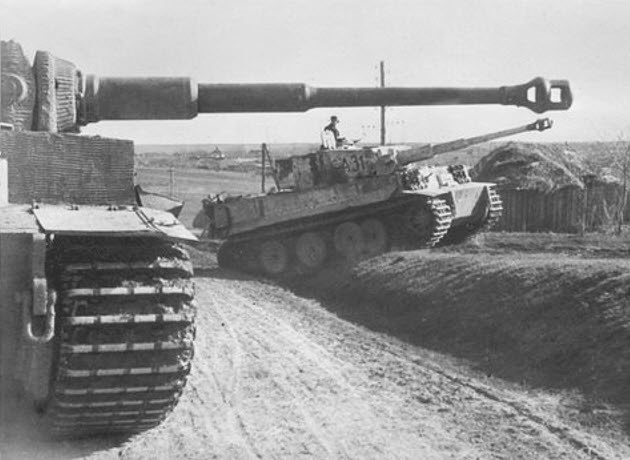
Tiger number A31 having its engine replaced.
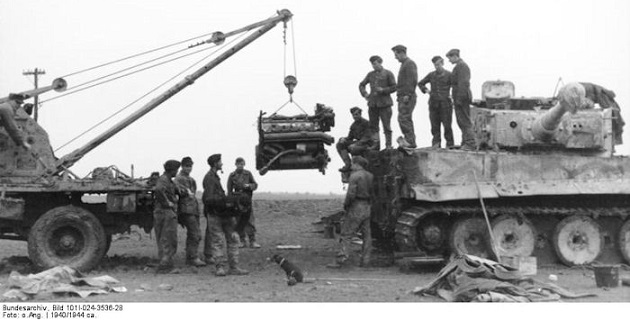
This is a close up view of Tiger A31 in the photo above.
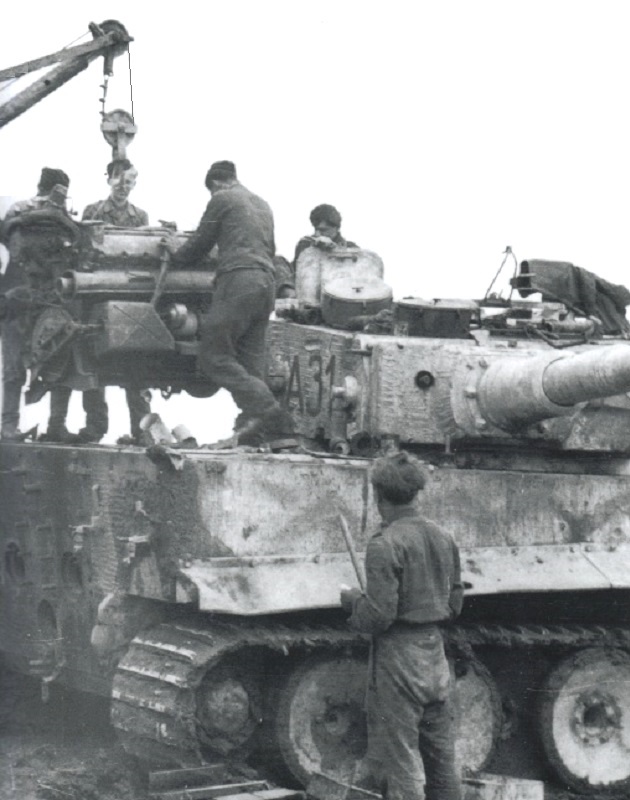
Panther Ausf. As of Großdeutschland passing through Bessarabia, April 1944.
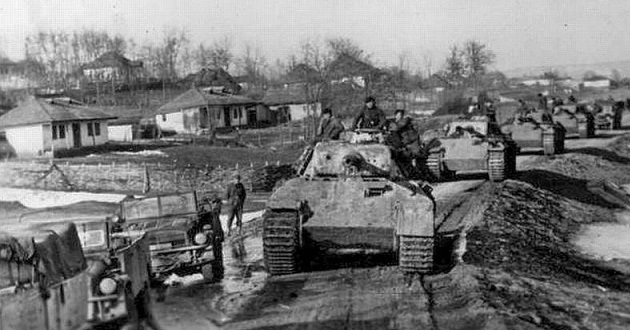
Târgu Frumos
Located in Iași, western Moldavia, Romania, in the foothills of the Carpathian Mountains, Großdeutschland was holding the Târgu Frumos (Frumos translates to “beautiful”). GD was dug in and laid a defensive belt of minefields surrounding the town. On April 26, led by over 400 tanks, the Soviets launched a major assault on Târgu Frumos, attempting to get into the Sereth Valley. Over a four day period, 150 Soviet tanks were destroyed by Großdeutschland’s infanterie. On April 30, the Divisional Commander Hasso von Manteuffel personally lead a counter thrust with III.(Tiger)/Panzer-Regiment GD without any preliminary artillery barrage – a Manteuffel tactic which he later used at Vilkovishken. When the enemy withdrew, 56 Soviet tanks were blazing on the battlefield. On May 2, the Soviets launched a renewed onslaught against GD’s lines. After an hour long barrage by massed artillery, wedges of Soviet tanks carrying infantry advanced with more infantry masses in reserve. GD’s lines were penetrated during the fierce fighting, and in the chaos indiviual panzerjäger teams stalked Soviet armour with Panzerfausts and Teller mines. GD’s infanterie lured the Soviet tanks into a line of 88mm Flak guns of Heeresflakabteilung GD and the Flak guns shot up 25 IS-2 Soviet heavy tanks. At this point of maximum uncertainty and vulnerability, the Soviets were then hit by the Tigers of III./Panzer-Regiment GD. Simultaneously, a kampfgruppe of I./Panzer-Aufklärungs (Armored Reconnaissance) Panzerjäger-Abteilung GD and infanterie advanced and scattered the enemy’s follow-on infantry.
A Tiger I of III./Panzer-Regiment GD (center) and a Panther Ausf. A of I./Panzer-Regiment 26 (left) in the area of Târgu Frumos, early May 1944.
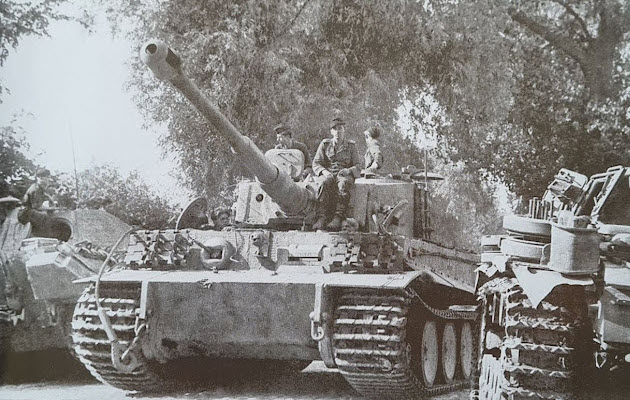
This is the damage on a GD Tiger I from a Soviet 122mm gun. The crew was lucky that no hit had penetrated but the Germans became aware an equal opponent has appeared on the battlefield.
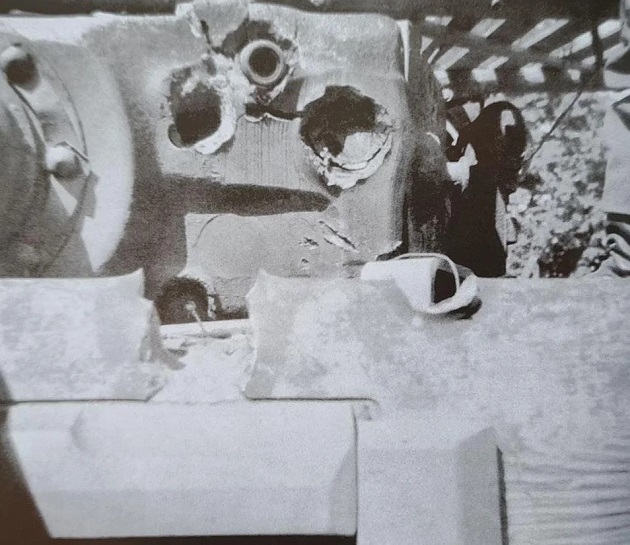
This is a destroyed Soviet IS-122 (IS-2 model 1943) heavy tank with a 122mm D-25T gun. The destruction was either done by the crew or by ammunition detonating in the tank. On May 2-3, the 6th Independent Guards Heavy Tank Regiment lost 21 tanks, but 9 were recovered and repaired.
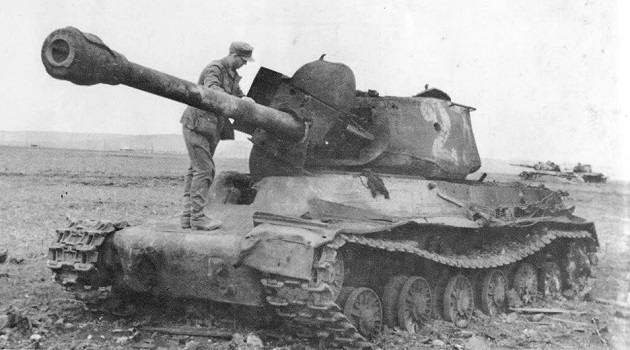
Film: Grossdeutschland Pt 4 – Targu Frumos
Film: German “Defensive Blitzkrieg” Defeated Russian Tanks
On 17 May 1944, Oberst Willi Langkeit and his crew resting next to their Befehlspanzer Panther Ausf. A number 01 in Iași, Moldavia, northeastern Romania. Instead of a letter “R” for a regimental panzer, it had a small black Großdeutschland helmet to the left of the number 01 on the turret.
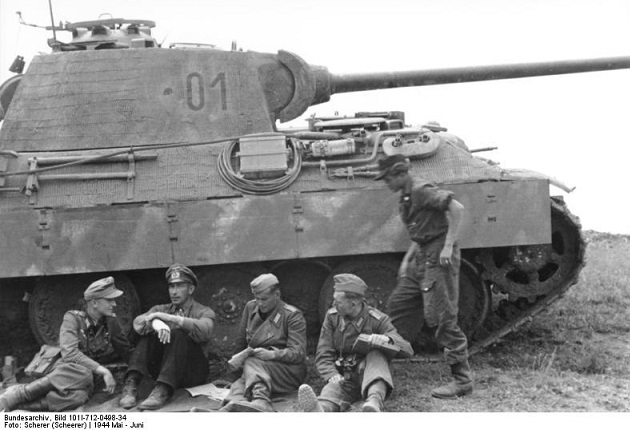
In the summer, Großdeutschland was once again pulled out of the front and given a rest and new equipment for a few weeks. Replacement crews, new equipment and equipment were brought in. In Panzer-Fusilier-Regiment GD, however, each battalion had to be reduced from five to four kompanies and the Pioneer Battalion GD was reorganized. The “Sturmartillerie Brigade” was reorganized with 45 assault guns (including 33 StuG III/IV and 12 StuH 42). The brigade had three batteries with two StuG III’s for each batterie command, while each batterie had two zugs of four StuG III’s and one of four StuH 42s.
During this period, elements of the division were deployed with the “Wachregiment Berlin” (Guard Regiment) in Berlin, which made them an instrument of suppressing the attempted putsch after the failed assassination attempt on Adolf Hitler on 20 July 1944. Subsequently, this guard battalion was enlarged and increased to a guard regiment. At the same time, I./Panzer-Regiment Großdeutschland was in France being re-equipped with Panthers. There they got involved in the fighting in Normandy after the Allied invasion.
At the end of July 1944, Großdeutschland was withdrawn from Romania after the battles around Târgu Frumos and was transported by rail to Courland (East Prussia and Lithuania). At this time, III./Panzer-Regiment GD was at full strength with 45 Tiger Is.
Tiger number A22 of III./Pz.Rgt. GD and other equipment on rail cars. Note the M34 Zeltbahn (German Tent Quarter) erected behind the Tiger which appears to be attached to the gun barrel.
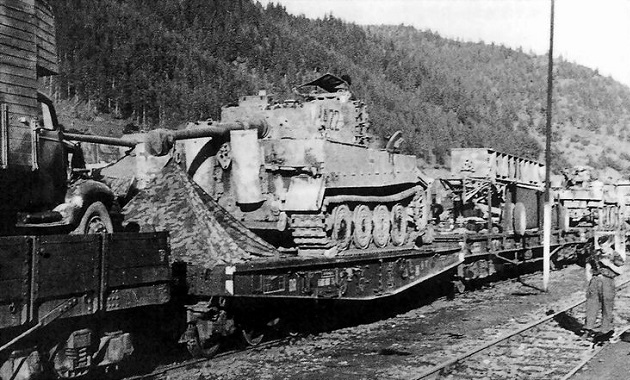
The Tiger I with its wide battle tracks was too wide for standard railway clearances and had to be converted to meet the clearance limits. The wide combat tracks are removed and a set of narrow transport tracks are installed. The side angled mudguards are removed as well as the other layer road wheels. On the rail car, the Tiger’s combat tracks and detached mudguards were stored underneath the tiger. The road wheels were stacked on the rail car in front and behind the tiger. In wide open areas of Russia, clearances were not a conern and the Tigers were transported in their combat configuration with their wide tracks and mudguards fitted. The Tigers were blocked into position to prevent shifting. An unique problem which occurred in Russia was the Russian rail system was a wider gauge than the European standard, and in many areas trains had to be off loaded and reloaded onto Russian rolling stock until the standard gauge tracks could be laid.
From July 30 to August 1, the GD Tigers were off loaded at Trakehnen, East Prussia, which was the heart of German horse country.
Tiger I with turret marking A12 has been driven off the rail car and the crew are waiting for a Sd.Kfz. 9/1 Famo half-track to off load its combat tracks. The outer panel of the front mudguard is still folded up to match the width of the hull superstructure, the maximum width for rail transport.

This is another view of Tiger A12. The tiger’s wide combat track has been laid out behind the panzer, ready for the crew to make the change.
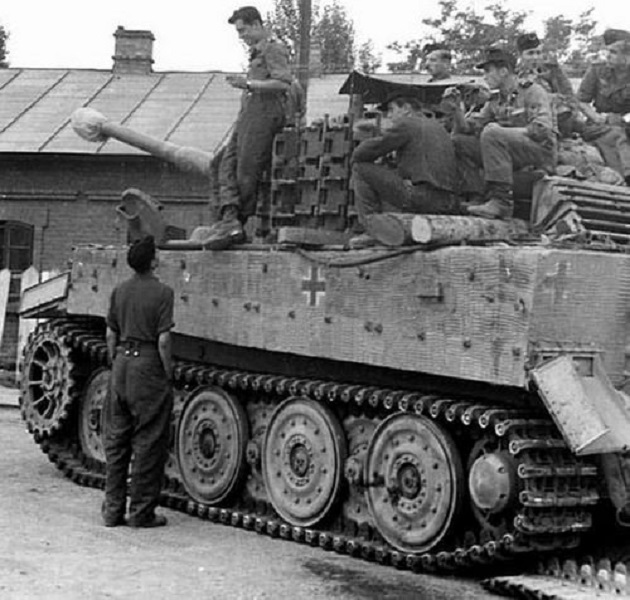
The crew of Tiger number A32 in the process of changing its tracks. The narrow transport track has been disconnected and rolled off. The outer layer road wheels had been re-mounted.
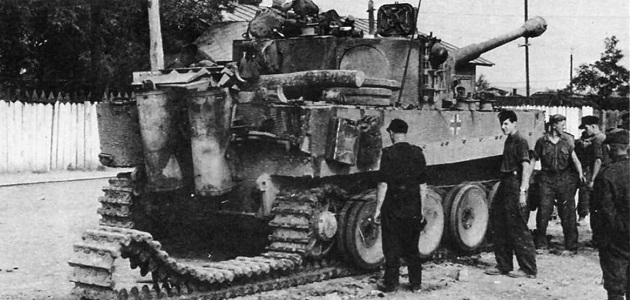
From August 5, the Großdeutschland PanzerKampfgruppe counter-attacked east of Wirballen and Wilkowischken. After the entire division had arrived and received new armored vehicles and heavy self-propelled guns, it continued to march to Schaulen in Lithuania.
Panthers of I./Panzer-Regiment Großdeutschland on the march in Lithuania.
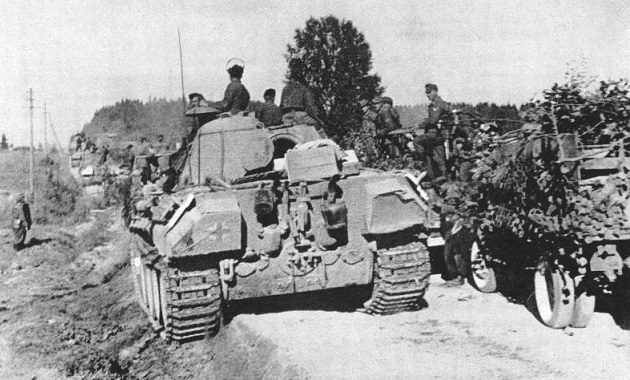
Vilkovishken
By the begining of August 1944, the Soviet offensive which destroyed Heeresgruppe Mitte (Middle or Center) had begun to lose strength as it approached the Vistula River in Poland. In order to keep the Germans off balance, the Soviets began to launch attacks on other sectors, especially that of Heeresgruppe Nord (North) along the Baltic Coast and the border of East Prussia. Großdeutschland arrived at its concentration area south of Wisballen to bolster a front held by the remains of various divisions and detachments of “Volkssturm” (home guards) made up of old men, invalids, and young boys. The inital efforts on August 3 by 10./Panzer-Regiment GD to keep the Soviets from cutting the highway from Vilkovishken just over the border in Lithuania to Gumbinnen in East Prussia were unsuccessful. As more GD units arrived, a Panzerkampfgruppe was sent in but was halted by fierce Soviet resistance, losing four Tigers. Großdeutschland was then withdrawn from the line to regroup for a new assault on Vilkovishken.
On the foggy morning of August 9, a kampfgruppe of panzers and panzergrenadiers jumped off for a surprise attack with no prelininary artillery barrage. As the sun began to dissipate the fog, the attackers were exposed to heavy Soviet artillery fire. The advance went forward in two columns, the Panzergrenadiers on the left moving due north on Vilkovishken while the Panzer and Panzerfüsilier Regiments on the right advanced in broad outflanking maneuvers to attack the enemy in the rear. The Soviets had entrenched themselves in front of the town and had turned Vilkovishken itself into a small fortress. The Panzers and Füsiliers were halted just beyond the town by minefields and swampy terrain while exposed to Soviet artillery, Katyusha rockets and Shturmovik ground attack aircraft. The Grenadiers on the left, with I./Pz.Gr.Rgt. GD in the lead, fought their way through a maize field and into the town, where savage house-to-house fighting raged late into the night, until the town was finally cleared. Meanwhile, II./Pz.Füs.Rgt. GD had crashed a Soviet attempt to break out to the east and relief attacks from the west above the Seimena River.
Tiger B01 of Hauptmann von Villebois of 10./Panzer-Regiment Großdeutschland driving down the road to Vilkovishken, 10 August 1944, pass a collection point for captured Soviet equipment. To the left are two Soviet 76.2mm ZIS-3 anti-tank guns. This is a late model Tiger with all steel road wheels. Note the position of the chain on the ground in front of the ZIS-3 on the left.
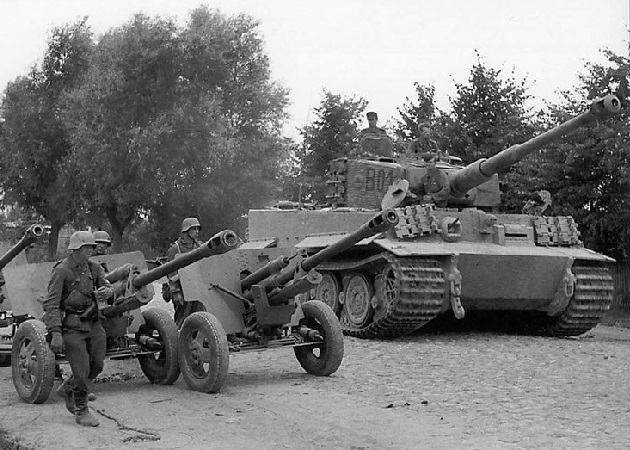
While Tiger B12 of 10./Panzer-Regiment Großdeutschland rumbles behind them, one of the Panzergrenaders scan the sky over Vilkovishken for signs of increasingly uncontested Soviet ground attack aircraft. The ZIS-3 anti-tank guns would be collected for removal to the rear for reboring to standard German 75mm anti-tank rounds and converted to SP guns. Due to its high velocity, the detonation of the shell was audible before the report of the 76.2’s firing was heard, thus the Germans nicknamed the gun “Ratsch-Bumm” (crash-boom). Beneath the ZIS-3 on the left is an obsolete but still widely issued Soviet 14.2mm anti-tank rifle and the same chain can be seen in front of it.
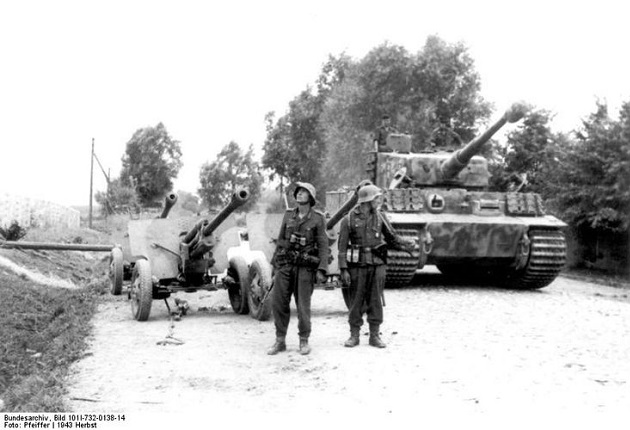
From 18 to 26 August, Großdeutschland counterattacked in the front gap between Armee Gruppes North and Center south of Libau and Memel. The counterattack at Riga followed to clean up the Soviet breakthrough to the Baltic Sea. After checkered fighting, the Riga-Memel-Königsberg road and rail link was recaptured together with the “Graf von Strachwitz” armored unit as part of the XXXIX. Panzer-Korps.
GD Tiger number C11 halted beside a supply column. Note the spare road wheel on the front hull.
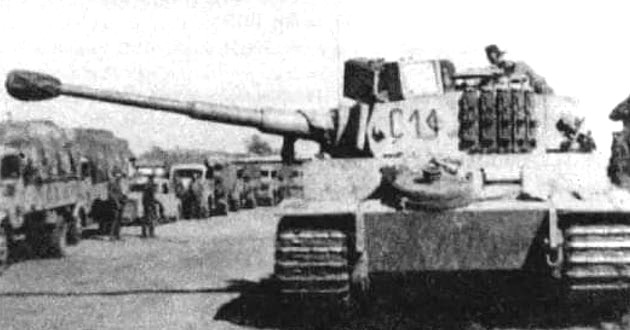
The following are a couple of mystery Pz.Kpfw. IVs in Panzer-Regiment GD in 1944. These panzers carry a tactical marking scheme similar to what used by the Tigers of III./Panzer-Regiment GD but the Tiger Battalion supposedly did not had any Pz.Kpfw. IVs. They might have belonged to II./Panzer-Regiment GD and there is no more information on these GD panzers at this time.
Pz.Kpfw. IV, numbered B24, is captioned as belonging to the Großdeutschland Division. Note the style of the the letter “B”.
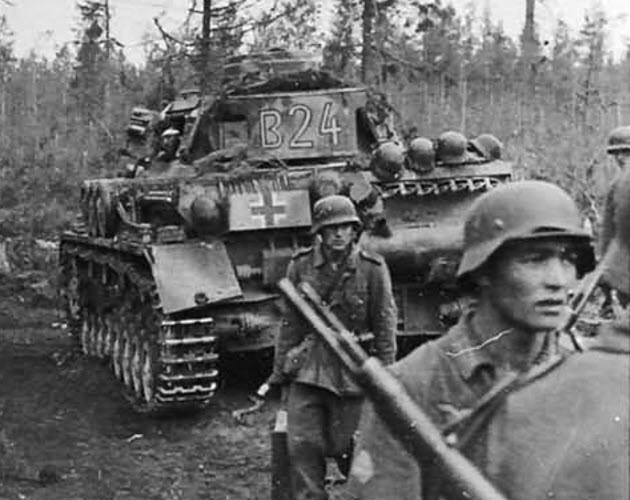
This Pz.Kpfw. IV is also captioned as belonging to Großdeutschland. Note it also has three spare sets of road wheels on the side fender and carried helmets for the crew hanging on the rear hull.
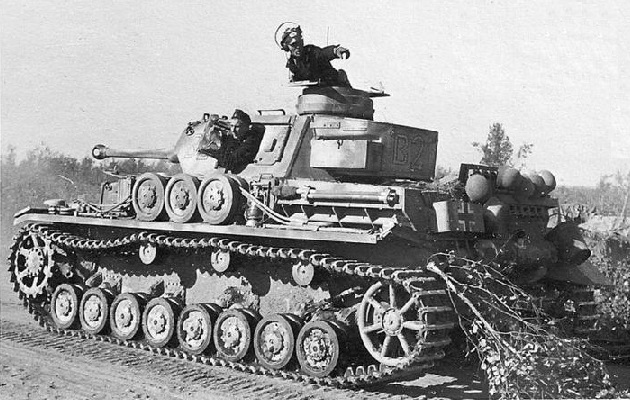
This is my close up of turret rear of the Pz.Kpfw. IV in the above photo. The number appears to be B21 which is also barely visible on the side of the turret. Note the box mounted on the side of the turret rear storage bin which is also on Pz.Kpfw. IV B24 above.
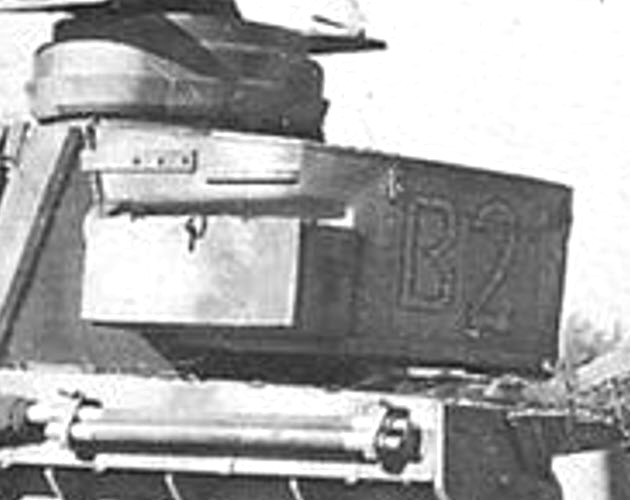
At the end of 1944, Großdeutschland was deployed on the northern section of the Eastern Front, defending the area and the Baltic Sea port of Memel. In the meantime, the division had not only been weakened by losses in combat, but also by the deployment of cadres for the new Führer-Begleit-Division, Führer-Grenadier-Division and Panzergrenadier-Division “Kurmark”. Until the beginning of October, Großdeutschland was involved in trench warfare and then in the defensive battle between Schaulen and Memel. Enclosed in the Baltic Sea bridgehead around Memel, the division was evacuated across the sea to Pillau on November 26.
In November 1944, the Panzer-Korps Großdeutschland was formed under Dietrich von Saucken, which consisted of the Panzergrenadier-Division Großdeutschland and the Panzergrenadier Division Brandenburg. Großdeutschland moved to the Korps meeting place at Arys, where a refresher was carried out and its Panther detachment returned and was reintegrated. The Panzergrenadier battalions were replaced and the remnants of the reinforced Motorized Grenadier Regiment 1029 were also incorporated. New armored vehicles, armored personnel carriers and heavy self-propelled guns also arrived.
1945
Panzergrenadier Division Großdeutschland spent the last months of the war fighting desperately in East Prussia. On 15 January 1945, after the start of the last Soviet winter offensive, a counter attack took place in southeast Prussia in the area of Praschnitz and Coechanow, north of the Narew. After successfully repelling a breakthrough attempt by the 2nd Belorussian front to the Baltic Sea, Großdeutschland had to retreat through northern Poland from January 16 to the 30th.
Panthers of I./Panzer-Regiment Großdeutschland, January 1945.
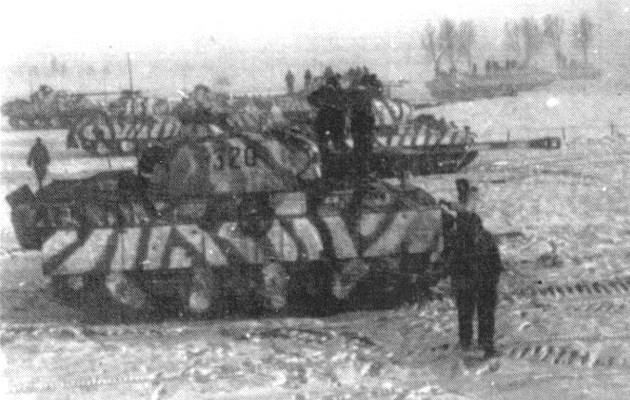
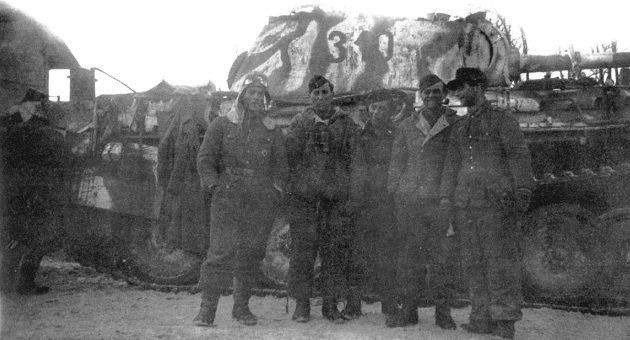
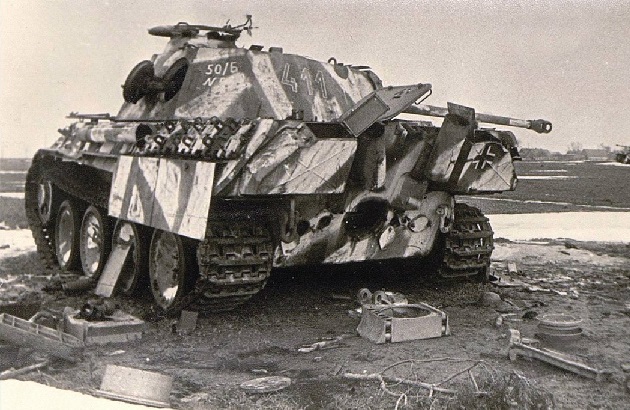
Großdeutschland then stood in fierce defensive fighting in East Prussia until March 28. In March, an attempt to break through into the besieged Koenigsberg failed, and the division was finally pushed to Braunsberg on the Vistula Lagoon. There, Großdeutschland had to dig in on the Balga peninsula where on March 19, the remaining Tigers of Panzer-Abteilung Großdeutschland make their last stand.
A disabled Tiger of 10. Kompanie in East Prussia, 1945.
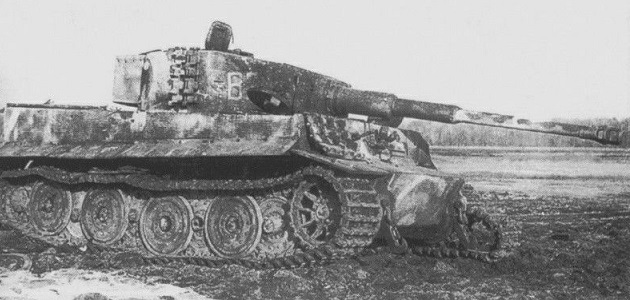
Between March 28 and April 14, the surviving elements were transported to Pillau, East Prussia ( Today Baltiysk) by ferries. At Pillau, the division defended the seaport of Königsberg at the naval fortress. Between April 26th and May 4th the remnants of the Kampfgruppe Pz.Gren.Div. GD retreated to the Vistula Spit. There they were relieved by a combat group of the 28th Jäger Division and all of them – except for two panzer grenadier kompanies that remained behind – were transported to Hela by ship. From May 2nd, the remains of Großdeutschland were successfully evacuated across the Baltic Sea to Bornholm and then to Fehmarn, thereby avoided Soviet captivity. The survivors gathered in Schleswig-Holstein to become POWs by the British after the Wehrmacht surrendered. The guard regiment, on the other hand, perished during the Battle of Berlin.
MODEL KITS AND DECALS
1/35:
AFV Club AF35S25 Pz.Kpfw. VI Tiger I Ausf. E Late Version mit Transportkette – 2011
Dragon 6315 Pz.Kpfw. IV Ausf. F1(F) – 2008
Dragon 6945 Panther D Sd.Kfz. 171 w/Zimmerit – 2020
Dragon 6950 Tiger I Early Production Battle of Kharkov – 2020
Dragon 6358 Sd.Kfz.171 Panther A Late Production – 2007
Bison Decals 35214 Tigers of III. Pz.Abt. Grossdeutschland – 2013
Star Decals 35-900 Tigers of Grossdeutschland 1943-45
1/48:
Tamiya 32597 German Tank Panther Ausf.D – 2019
1/72:
Dragon 7560 Pz.Kpfw. IV Ausf. F1(F) – 2017
Hobby 2000 72701 Pz.Kpfw. IV Ausf.F2(G) Eastern Front 1942 – 2021
Revell 03107 Panther Ausf.D/Ausf.A – 2015
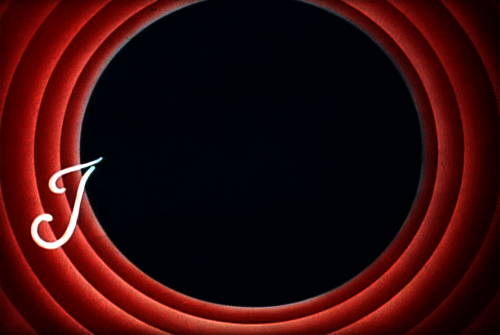
Hi Mike, generally speaking I love your research, but you whiffed on GD.
If you check Panzertruppen by Tom Jentz, he indicates the in April 1942 GD was outfitted entirely in Pz4s. No Pz3s, although there is photo evidence of Pz2s (probably as command vehicles).
I trust Jentz more than Jung, simply because I know Jentz uses actual strength returns and source documents.
There is no photo evidence from that time period that suggests Pz3s at all – all are Pz4s.
Also only the Tiger units used an alpha-numeric call sign. The Pz4s in your photos with the “B” prefix are from a different unit entirely. Not affiliated in any way with GD.
Thanks for your work.
Kip Rudge
LikeLike
There are a lot of errors in the marking of armored vehicles. For example, tanks Pz.Kpfw.IV with numbers B21 – B24 are not related to the GD division. They are from 1./Pz.Abt.z.b.V.66 commanded by Hans-Gunther Bethke, hence the letter “B” in the number.
Tactical numbering of the tanks of the division “Grossdeutschland” in the summer of 1942 on the example of the 1st company Pz.Abt.”GD”. The company included 10 Pz.Kpfw.IV tanks and 3 Pz.Kpfw.II tanks. The organization and composition of the 2nd and 3rd companies of the battalion was similar to the 1st company.
1./Pz.Rgt.”GD”
Pz.Kpfw.IV company headquarters: -0
1st platoon Pz.Kpfw.IV: -1, -2, -3
2nd platoon Pz.Kpfw.IV: -4, -5, -6
3rd platoon Pz.Kpfw.IV: -7, -8, -9
Light platoon Pz.Kpfw.II: -1, -2, -3
The numbers were a combination of horizontal stripes and numbers printed in white on the sides of the turret and on the turret box. The number of stripes (from one to three) indicated the company, and the number showed the serial number of the tank in the company – from 0 to 9.
LikeLike
Very profesional and intetesting to read, thank you so much
LikeLike